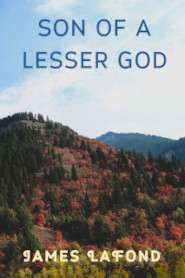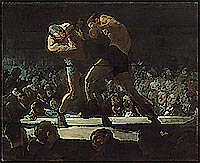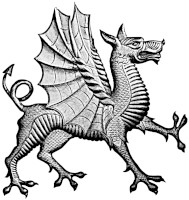I do not recall a movie or any modern treatment of the ancient world which did not depict weaponry as being made of modern spring steel. Steel was a long way off in the period under discussion. In fact steel as we know it did not become universal among first world militaries until the Middle Ages, with Viking smiths, for instance, making swords of beaten iron bars. Even the vaunted samurai sword was not made of the springy steel it is depicted as being in such movies as Highlander. I am not qualified to discuss the various methods of steel making. Suffice it to say that in the period that saw the composition of the Iliad, The Odyssey, and the Labors of Herakles, steel as we know it, did not exist, except possibly in India, from where the ‘Wootz’ alloy process was exported in the time of Alexander, in the mid 300s B.C.
As with the later Middle Ages a weapon of pure metal—a sword—was a thing of great expense that would only be owned by well paid mercenaries, royalty, hereditary nobility, and the landowning class. Of course, if your video game gets picked up by a major publisher, or your script gets picked up for film or TV, all weapons will be of singing shining steel and all combat will be of Hong Kong theater derivation. But, in the meantime, as we labor in the ghetto of reality-based fiction, we might as well get it right. The limitations of various pre-modern metal weapons were such that more intelligence was required of the warrior than in the late Middle Ages, which was the theater where the final development of Japanese, Chinese and European battle swords occurred—even as they became obsolete. Just as the Kentucky rifleman, who used a flintlock weapon that required over a dozen steps to load and fire, must be more intelligent and battle-adapted than the postmodern terrorist that yanks his AK out a duffle bag and starts spraying and praying, the Bronze Age and Iron Age swordsman must be a warrior of more finesse and practicality than his 16th Century descendent.
Bronze Swords
Bronze is an expensive and heavy allow that will not be used to make swords longer than the arm of the wielder. The edge is only fair, and is somewhat better than the edge of an unsharpened steel blade. Bronze bends and must be used edge on. It is therefore not advisable to parry with the flat, making bronze swordsmanship similar to the use of large knives like the Bowie and the katana.
The bronze sword is not to be used without a shield, the shield is the nemesis of the bronze sword, designed to bend and break the blade into uselessness—and ironically its protector as well. The bronze blade is generally therefore shorter than the arm of the wielder, wide, and used in a conservative hack and stab fashion, with blade techniques following on and being covered by shield techniques, with shield actions properly comprising two of every three techniques employed with the integrated weapon set that is the bronze sword and metal-banded wooden shield.
Iron Blades
Iron is a cheaper, more easily made metal than bronze. Higher carbon iron can take a keen edge and makes a much nastier point for thrusting weapons and missile tips. High carbon iron—the grandfather of steel—is brittle though, and will break easily on the shield rim. Iron swords will therefore either be made of soft iron that bends and deforms easily and holds a poor edge, or hard iron which tends to shatter but can puncture most armors.
Blade Design
The configuration of the blade is more specific and more varied than in later periods of plentiful higher quality steel. Blade design is also influenced—and even dictated—by the metal used in its fabrication. All swords will be full tang, and tend to be broader and thicker—and therefore heavier—than steel weapons of the same length forged for the same purpose in later times.
Aor
The Aor is an iron blade with a very broad base—so broad that it may be as broad as later hand guards and cover the hand. The blade tapers to a point. The aor is a thrusting blade. Short aor are to be used with a large shield. The longer the aor the smaller the shield it should be paired with. The technique is called orbiting or continuity by modern fighters, with the blade kept in contact with the shield rim from where it will be thrust over, under, or around. The base of the blade will not be sharp and will hold up to shield contact. The tip is liable to be broken. Any slashing with a long aor is likely to result in a fracture about a hand below the point.
A short broad aor would be an inexpensive and nasty sidearm for spearmen bearing large shields.
This was a rare design in archaic and classical Hellas, though it had been a favorite blade configuration among the prehistoric boxing warriors of Crete, the thrusting blade being well understood by boxers throughout history.
Xiphos
The xiphos or ‘reaper’ is a slashing weapon that widens until that point a hand below the tip when a tapering or un-tapered blade is most fragile—known to swordsman as the ‘foible’. The blade design is exactly that of the Cold Steel double-edged machete, dull versions of which I have fought with. This weapon may be made of bronze or iron and is well designed for defeating small shields and large shields of light construction. It is excellent for cleaving skulls and helmets and well-deserves its name.
Machaira
The ‘cleaver’ was the universal weapon of the low class cutthroat and barbarian of the time, and is essentially a machete, machete being the etymological child of this ancient ubiquitous blade. The design will most likely be of the Filipino ‘bolo’ type and tend to be of a cubit in length [elbow to fingertip] for footmen and arm length for horseman.
The machaira is best used with a small oval, round, or U-shaped shield and may be effectively used without a shield if the combatant is mindful not to hit a shield, and to dodge and leap and target the enemy hand rather than parry.
Kopsh
The kopsh or ‘chopper. Is an Egyptian small sword design adopted by the Argives. This blade works well with bronze, iron or steel and is designed exactly like the modern kukri, which is a Nepalese blade supposedly copied from Alexander’s weapon of choice. The otherwise dreadful movie Alexander, starring Colin Farrell as Alexander, depicts him using a horseman’s kopsh of steel.
The blade is concave to avoid shield rims and permit stabbing and hacking over and around a shield. A thick broad kopsh of iron or bronze could be used to attack the face of a shield, though the rim and the boss must not be engaged. Keep in mind that this is a big knife adapted for close range fighting.
The kopsh is just as likely to have evolved out of the knife or the club, which are the two parent weapons of the sword.
Spatha
Spatha, a term for a long sword of soft iron, is possibly the anti-descendent of the terms saber, sword, espada, sickle, sax, scramasax, Saxon, Sicily, Spanish and other weaponry and ethnic terms of European origin. This would be an arm-length iron war club that would cut as well as a dull modern steel replica and bend on contact with blades and shields and when using the flat. Forget any fencing. The use of this blade would more closely resemble the use of the Chinese broad sword, though the blade appears almost identical in shape to the Chinese long sword.
With such a blade the use of the shield is paramount. This blade would most often be paired with a light oblong hand shield not unlike the African hide shields of the Zulu. The spatha will not be paired with an arm strap shield. A long two handed spatha is conceivable, though the weight and amount of iron would be unwieldy and wasteful.
Akinakis
The Persian dagger is a minimilaized sword that evolved out of the knife, as did the aor, where as the machaira, spatha and xiphos evolved out of clubs or oars. This is the typical ancient sword of the heavy infantryman; a stabbing weapon intended for use when the more militarily practical spear has been broken, or rendered ineffective in the press of rank on rank.
Use of Archaic & Homeric Swords
Swordsmanship has—contrary to Hollywood—never involved much blade on blade contact if the combatants could help it, for they had other goals in mind. Banging together of swords should have negative consequences, not the least of which is the inadvisability of focusing on the enemy’s weapon rather than the enemy.
There have been types of swords well adapted for defeating shields, and when wielding these short heavy steel blades I have rejoiced in bruising an opponent’s shield arm. However, these were weapons of a later time. Purposely striking banded, bossed, or heavily constructed shields with the sword types above is suicidal.
Also remember that the main purpose for a sword’s hand guard or hilt is to keep the hand from being smashed by the enemy’s shield. The hilts of all of the above swords were nonexistent or minimal, as the existing doctrine focused on avoiding the enemy’s shield.











